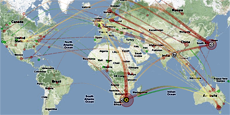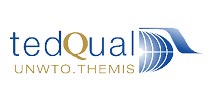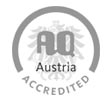Social media as a barometer of environmental policy – Analyzing coverage on the COP 17 Climate Change Conference
To coincide with the UN World Climate Conference in Durban, South Africa (COP 17), MODUL University Vienna, together with a team of Austrian researchers, presented the newest release of the Media Watch on Climate Change (www.ecoresearch.net/climate), a comprehensive system for the analysis of social media and online reports from many different sources (Anglo-American news media, scientific publications, social media including Twitter, Youtube and Facebook, environmental organizations, corporations, etc.).
COP stands for the “Conference of the Parties” yearly assembly, which consists of the 195 countries that signed the United Nations Convention on Climate Change. The current COP 17 event emphasizes the importance of global communication and collaboration for addressing environmental problems. Acquiring, managing and applying knowledge are crucial steps in ensuring that change is conceived and implemented on both regional and society-wide scales.
The new release of the Media Watch on Climate Change aims to support these processes by increasing transparency, creating shared meaning and supporting sustainable processes. The impact of the Kyoto Protocol is a chief component of the COP discussions, and a media watch search turns up an extensive array of articles from across the globe. By querying terms such as “COP 17” and “Durban”, users can obtain an up-to-date and comprehensive overview of matching quotes, semantic associations, and the geographic distribution of search results. Color-coded by sentiment (green = positive; red = negative), the current distribution reflects a skeptical Anglo-American media landscape with diverging views on whether urgently needed progress will be achieved, as well as intense discussions about previous treaties such as Kyoto.
The interactive technologies of the climate portal (see www.weblyzard.com) underline the importance of new forms of environmental communication and cooperation. The visual exploration tool allows users to monitor in real time in which countries and on which online platforms relevant content is published, whether the sentiment is positive or negative, and what main topics related to climate change are being discussed. More than five years into the project, the Media Watch on Climate Change is an important contribution to creating more transparency and understanding the positions of various stakeholders.
Related Research Projects
• Climate Change Collaboratory (www.modul.ac.at/nmt/triple-c)
• Dynamic Integration and Visualization of Information from Multiple Evidence Sources (www.weblyzard.com/divine)





